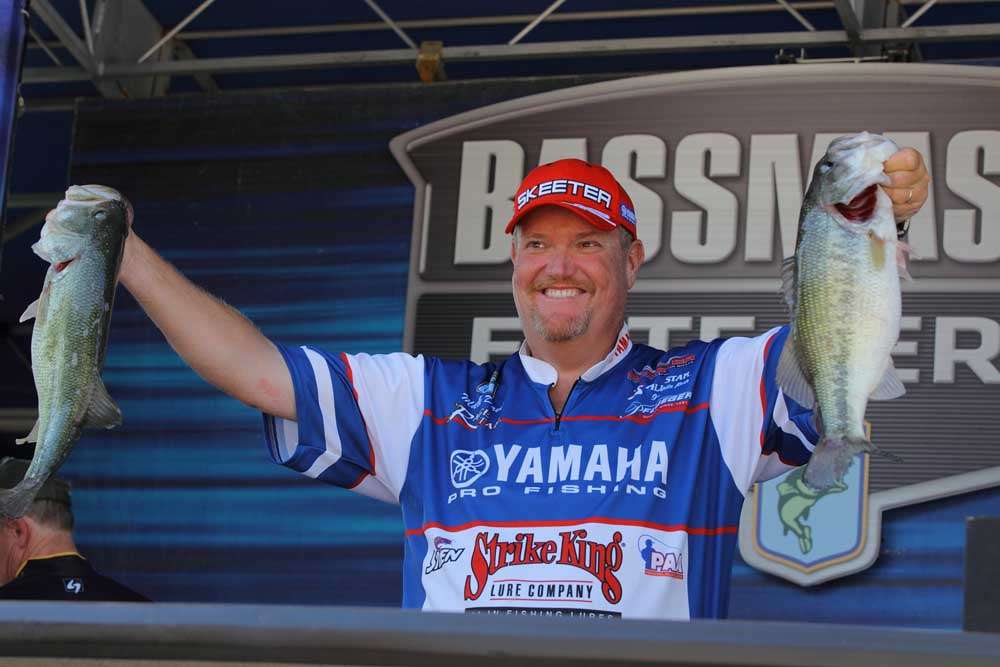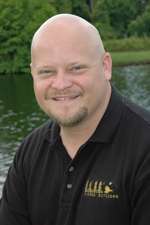
Last time we talked about the best and worst seasons in Bassmaster Elite Series history, and I promised to cover what it takes to qualify for the 2013 Bassmaster Classic on Grand Lake, Okla., from the Elites.
Let’s see if we can do that without making your head hurt like mine does sometimes.
Well, there are really three ways an Elite angler can get to the Classic. First, he could win the Classic and get an automatic berth as the defending champion. That’s how Chris Lane punched his ticket to Grand.
Second, he could win an Elite tournament. So far, Alton Jones, Ish Monroe, Brandon Palaniuk and Jeremy Starks are all Classic-bound by virtue of their Elite victories. With four tournaments to go, odds are that four different anglers will earn spots in the second half.
Third, he can finish in the upper echelon of the Toyota Tundra Bassmaster Angler of the Year points standings for the 2012 Elite season.
In all, about 38 Elite anglers will be in the field at the 2013 Classic. I say “about” because the number’s not carved in stone. Only 28 plus the tournament winners are actually guaranteed spots, and the number could go as high as 44, depending upon how many Elite anglers double-qualify.
Double qualifying is a big deal … but not to the anglers who do it. For them, double qualifying just means they’re having a nice year. The anglers to whom double qualifying means the most are the ones who will get Classic berths when they otherwise wouldn’t. Ironic, huh?
Of the top 28 anglers in the AOY standings, four are already “in.” That includes Lane (who won the Classic and an Open); Jones and Starks (both are Elite champs this season) and Brent Chapman (Open winner).
Assuming they’re all still in the top 28 of the AOY race at the end of the season, those four create additional openings for the 29th, 30th, 31st and 32nd anglers in the year-end AOY standings. Again, it’s more than a little ironic because it means the success of the double qualifiers (let’s call them 2Qs) only gives them more competition in the biggest tournament of the year. It’s a strange way to reward them.
With four Elite events to go, let’s anticipate that four anglers who are not already qualified for the 2013 Classic will win the tournaments and that three of them will finish the season in the top 28 (history says that’s about the right ratio). That adds three more Elites to the Classic mix via double qualification — the 33rd-, 34th- and 35th-ranked anglers in the AOY race.
We need to look at the Opens, too. There are still five Opens tournaments left in the season. Three of the four already in the books were won by Elite anglers — two by Elites who are currently in the top 28. For the sake of discussion, let’s say that two of the remaining five Opens are won by Elite anglers who are also in the top 28 of the AOY race.
That expands the number of Elites in the Classic to 37 — add numbers 36 and 37 from the AOY race.
And that gives us our rough benchmark.
If an Elite angler hopes to make it to the 2013 Classic without winning a tournament, he needs to finish in the top 37 of the AOY race — give or take. Unfortunately, this is not an exact science.
So what does it take to do that — to finish 37th?
Well, it doesn’t mean you need to average a 37th-place each time out — not any more than you’d have to win every tournament to be AOY.
There’s a new Elite points system that might shake things up a bit in the AOY department, so I re-ran the numbers of the six previous Elite seasons to see what they’d look like, and they tell an interesting story. To finish 37th in AOY, you need to average about a 44th place finish for the season. Right now, Mark Davis is sitting in 37th place and he’s averaging about 44th place in the first four tournaments.
That means an angler needs to finish the season with about 448 AOY points to give himself a fighting chance to make the 2013 Classic.
And what does that mean to the anglers who are lower than Davis in the standings and hope to qualify for the Classic?
John Crews is currently 50th with 205 points. He needs to average a 39th-place finish to put himself in contention.
Takahiro Omori is 60th with 183 points. He needs to average a 34th-place finish to have a legitimate chance.
Morizo Shimizu is 70th with 162 points. He needs to average a 28th-place finish to become a contender.
James Niggemeyer is 80th with 138 points. He needs to average a 22nd-place finish to get near the bubble.
Pat Golden is 90th with 105 points. He needs to average a 14th-place finish to give himself a chance.
And Dave Smith is 99th with just 45 points. His situation is simple. He needs to win one of the remaining Elite tournaments.
The math says that the bottom couple of guys in the AOY standings have to win to get in the Classic, but it’s about that dire for much more of the field.
Realistically, an average finish in the top 20 or 25 for the remaining four tournaments is out of reach. That’s nearly an AOY pace, and only a few anglers have ever done it for half a season. The ones who have are pretty much already in the cut.
The anglers who rank worse than 70th at the halfway point need to start putting all of their eggs in one basket. It’s hero or zero from this point on. They need to win an Elite event or start thinking about next year.
And as each of the remaining events goes into the books, that cutoff point moves up eight to 10 places because the deeper you get into the season, the more points have been accumulated and the harder it gets to move up. So, if you’re 62nd or worse after Toledo Bend, it’s time to go for broke. If you’re 53rd or worse after the Mississippi River, you’d better find a way to win. And if you’re 44th or worse after the Mystery Lake, you have almost no chance to make it without winning that last tournament.
It’s something to think about.





